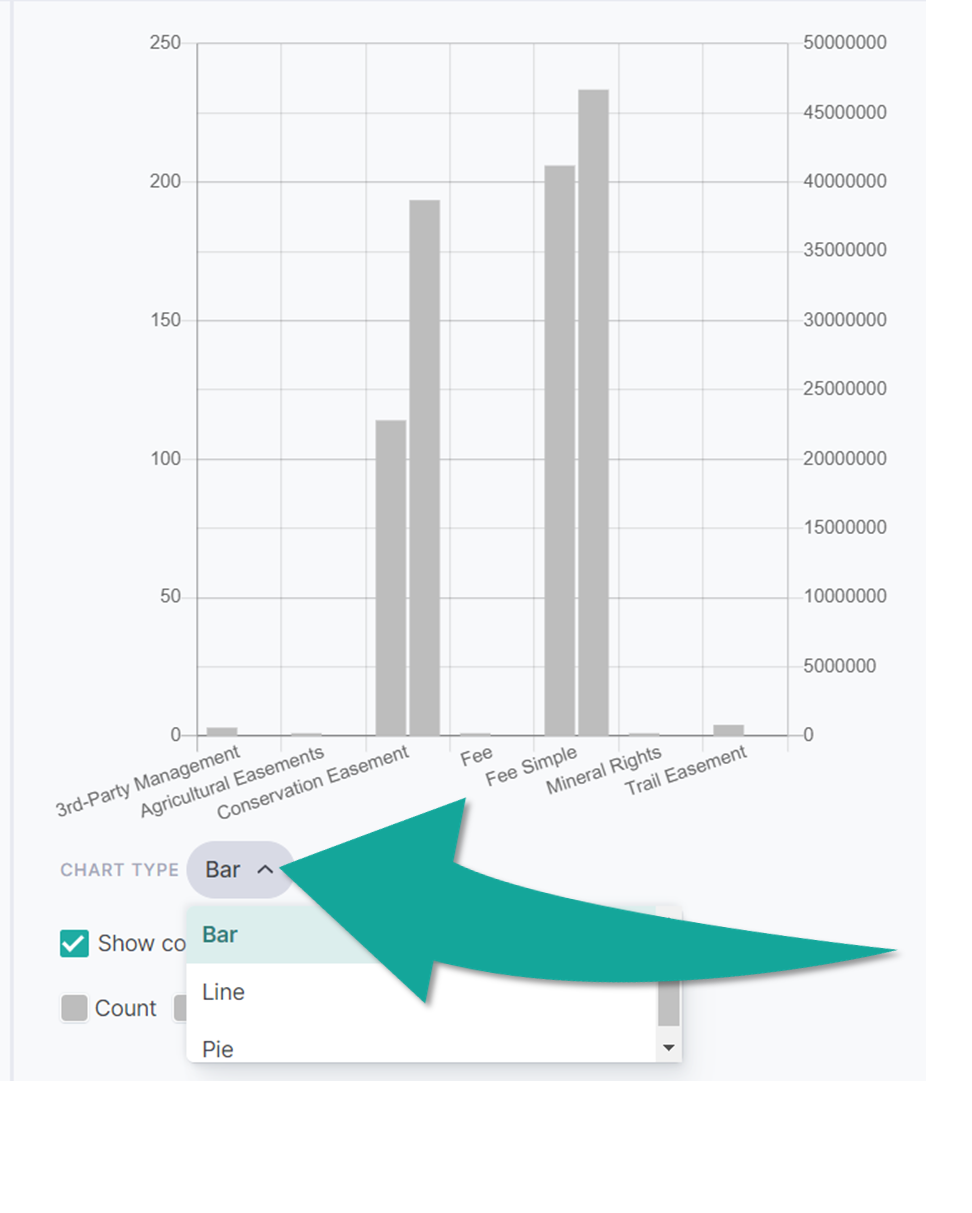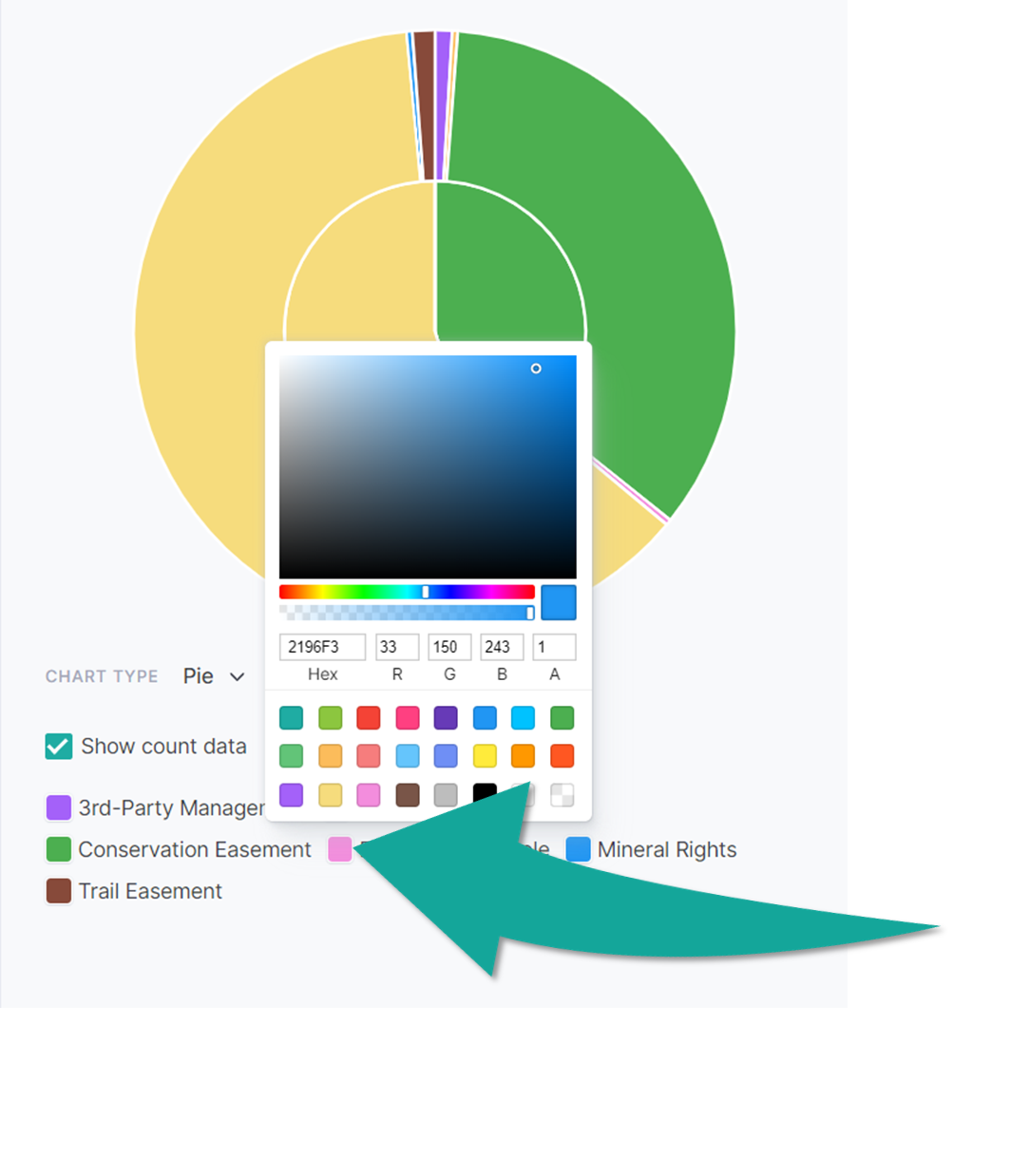Dashboard Widgets
You can use dashboard widgets to visually summarize data for an 'at a glance' view into your work. This article describes various ways to create and edit widgets, in addition to a description of each type of widget.
In this article:
- Creating and editing dashboard widgets
- Adding a widget to a dashboard layout
- Using the widget menu
- Types of widgets and examples
Creating and editing dashboard widgets
Understanding Dashboard Layout and Widget Editing Behavior / Visibility
When an Administrator makes changes to a default dashboard layout or widget, those changes will be seen by all users who see or use those widgets. For example, if they change the styling of the Property Map widget, those changes will be seen on any dashboard that uses that widget (not just the default dashboard). For this reason, non-administrators (standard users) cannot make changes to default dashboards or widgets, as those changes would then be visible to all users. They need to first copy a layout or widget, then they'll be able to edit this copy.
Create a new dashboard widget
From the dashboard, click on '+ Add Widget' at the top of the dashboard.
Choose 'Create new widget'
You can now start building the widget using query logic. Once you're done, click on the back button to be taken back to the dashboard. Your new widget will be shown at the bottom of the dashboard. You may have to scroll down to see it.
Copy and edit a widget
To copy and then edit a widget from an existing dashboard layout, click on the three dots to the upper left of the widget and choose 'Copy and Edit'.

The widget editor will open. From here you can change what is displayed by the widget the same way you edit a view.
Rename the copied widget something descriptive by changing the view name field:

Then press the back button to the left of the name to go back to the dashboard. This widget will now appear in place of the widget you copied. Note that since you altered the default dashboard, the name of your dashboard now appears as 'Unsaved Layout'. You can choose to save this dashboard layout and give it a name.
Save a view as a widget
You can save a view as a widget to make it available on your dashboard layouts.
Starting from Data Viewer, you can develop your query and then save that query as a dashboard widget.
After you create a view to see the summary data you want in your widget, click 'Save As...':

Change the 'Save As' drop down menu to 'Dashboard'. Then give the widget a name and click 'OK'.
You can then navigate back to the dashboard and add your new widget from the '+Add Widget' button (it will not appear automatically).
Edit an existing widget
You can edit widgets that belong to you, or, if you are an Administrator, you can edit default widgets. Edits made to default widgets will change the widgets for all other users.
To edit a widget, click the 'More' (ellipses) button in the top right corner of a widget and select 'Edit'. If 'Edit' is greyed out or missing, you do not have permission to change that widget.
You can see who owns a widget by clicking the 'More' button and selecting 'See Widget Query':

Adding a widget to a dashboard layout
Once your widget is created, you'll need to add it to the dashboard. From the dashboard, click on '+ Add Widget' at the top of the dashboard.
Choose 'Add existing widget', then choose the widget you want to add from the drop down menu. If you don't see the widget you're looking for, then it's possible it may not have been shared by the user that created it.
Using the widget menu
Once your widget is added to the dashboard, you can click on the three dots next to it to see additional options:

To hide the widget, select 'Remove from layout'. This will remove the widget from the layout, but you can always add it back again by using the 'add widget' menu.
'See Widget Query' displays the query logic underlying the results, as well as the owner (if not the current user or an Administrator). Note: This will NOT display any field filters that have been applied to the query results.
'Copy and edit' will create a copy of the widget for editing -- useful if you want to preserve the widget but make something new based off of it.
'Edit' will edit the widget. This is only available if you are the creator of the widget or you are an administrator and it's a built-in widget.
'Include Count' is an option whether to display or not the total results returned by the query.
'Shared' indicates whether the widget has been shared with your organization.
If any of these are greyed out, it means they are unavailable because you do not have the privileges to make changes. Copy the widget to make your own copy, then save it as something new and add it to your dashboard. You should then have access to the previously inaccessible menu items.
Types of dashboard widgets
- Count widget
- Grouped count widget
- List widget
- Chart widgets (Bar, Pie, and Line)
- Map widget
- Timeline widget
Note that the query editor interface has changed a bit since the videos below were created, but the process and logic remain the same.
Count widget

The count widget displays the count of records as well as a sum field, if applicable. To make your own count widget, just create a view with a countable item (anything!) and a field which can be summed (optional). If you don't include the sum field, it won't be displayed on the widget. You can incorporate as many summed columns as you need in a widget by clicking the sum button at the bottom of any countable field in a view.

Sums and Counts do not check for duplicate data! It is easy to accidentally create a view that counts things twice, so use caution when creating your widgets. For example, a view of 'All Portfolio Records' that sums up size will return overlapping parcels, properties, and groups as separate rows and will sum up the values as if they are not related, resulting in double or even triple-counting of certain acreages. What you probably want to do in most cases is restrict these types of overall record summary views to property records only. You can do this by adding a Type = 'Property' query to your Portfolio Records view.
Here's a video of how to create a widget that displays the total purchase price of all of acquisitions:
Grouped count widget

This widget is made in the same way as the count widget, but adds the values of a selected field.
In the example above, the widget groups results based on values in the field 'Property Interest'.
Here's a video on how to group the results of a count widget:
List widget

List widgets display the full details of results from your query. The result row height is fixed and field, and column width is dependent on the size of the widget and the number of other columns.
To make a list widget, build your query and make sure the results are set to 'Display as Table'. Then, check the box that says 'Show list of results in widget'.
List widgets respect grouping, counting, and sums. They can also be filtered in their dashboard state (i.e., users do not have to edit the widget to filter or sort by a field column).
Chart widgets
Chart widgets work similar to Grouped count widgets. First, edit the query to display the type of results you would like to summarize. Then, group the results based on the values of a field using the method described in grouped count widgets. Then, display the results as a chart by changing 'Display as Table' to 'Display as Chart'.
Just like with count widgets, you can opt to include a count or sum field.

The widget will be displayed as a chart the the right of the results list. By default, it will choose a bar chart. Change the type to pie or line using the dropdown menu below the chart.

Once you select the type of chart you want, you can add some colors by clicking on the squares next to the group name.

The pie chart above has an outer and inner circle to display both the count of the categories and the sum of the donated value, respectively. If you only want the count to display, toggle the sum button at the bottom of the results table to deactivate sum.
If you'd like the chart to hide the count information and show only the summed field(s), uncheck 'Show Count'.
A line chart widget is best utilized to show progress over time. In order to create a line chart widget, you'll need to have a date/time field in your view and then group by that field. Select 'Display as Chart' and choose 'Line' as the chart type.

Map widget

A map widget can be used to show map data from your Landscape account. They can be used to navigate directly to an item by clicking on it and selecting the link in the map popup.
Any item that has geography associated with it can be shown on a map widget. For example, you could have a map widget to track all active Issues, or a map widget to display all current Leases.
Note: The fields you have activated in the table view are the fields which will appear in the popup when you click an item in map view.
For more on how to create and style a map widget, see this article:
How to Create a Map of Property Interests
Timeline widgets

Timeline widgets are most useful when displaying results that have two date fields, such as the Identified On and Expected End dates for a Project or the Start By and Due on dates for a Task.
To create a timeline widget, use a query to get project or task results and choose the relevant date fields as columns. Then, choose to 'Display as Timeline'.
